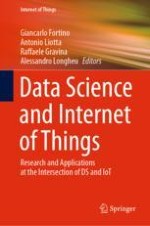This book focuses on the combination of IoT and data science, in particular how methods, algorithms, and tools from data science can effectively support IoT. The authors show how data science methodologies, techniques and tools, can translate data into information, enabling the effectiveness and usefulness of new services offered by IoT stakeholders. The authors posit that if IoT is indeed the infrastructure of the future, data structure is the key that can lead to a significant improvement of human life. The book aims to present innovative IoT applications as well as ongoing research that exploit modern data science approaches. Readers are offered issues and challenges in a cross-disciplinary scenario that involves both IoT and data science fields. The book features contributions from academics, researchers, and professionals from both fields.
